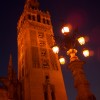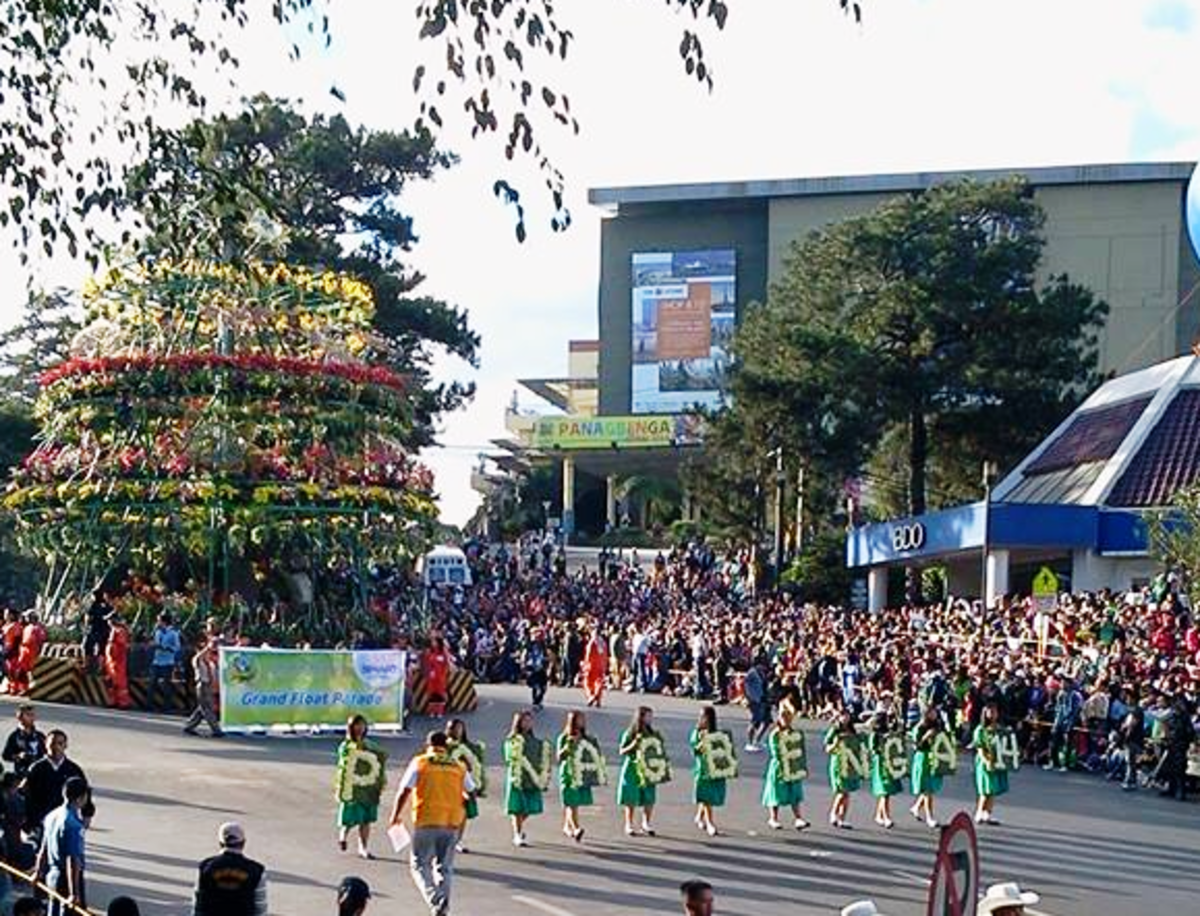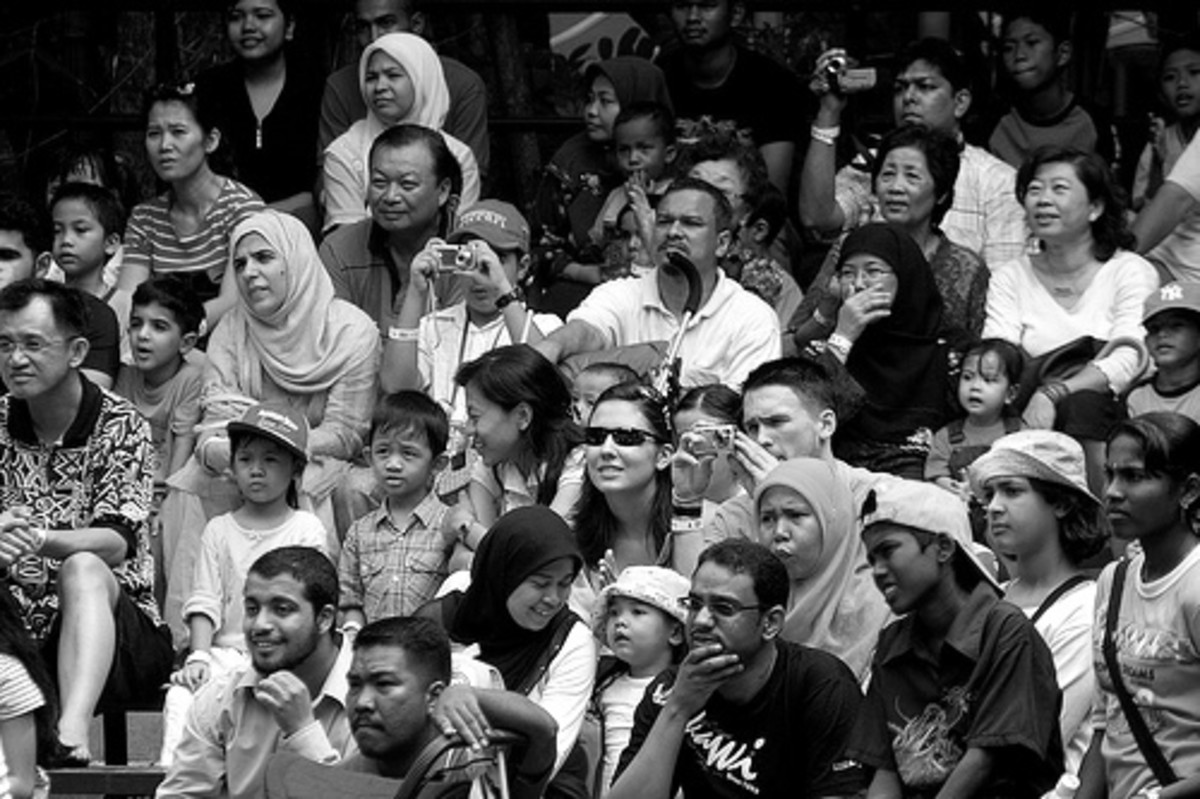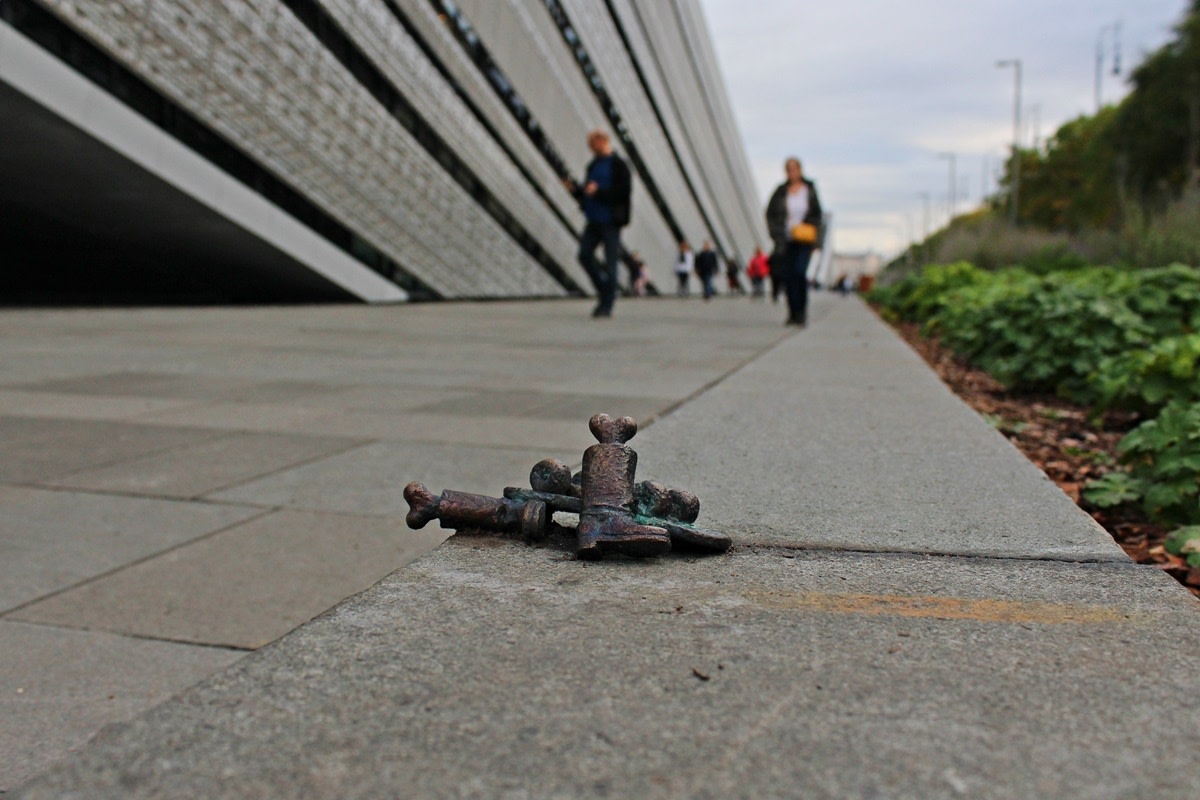The Running of the Bulls/The festival of San Fermín
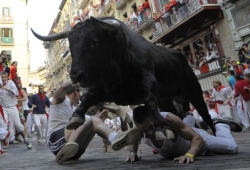
The Running of the Bulls
The festival of San Fermin, or the Pamplona bull running as it's more commonly known outside Spain officially begins at midday on 6th July every year with the 'chupinazo' which takes place on the balcony of the Casa Consistorial in Pamplona. Thousands of people congregate in the square awaiting the mayor's official announcement that the fiestas have begun, a rocket is launched and the partying begins.
The history of the bullrunning in Pamplona is not clear. There is evidence of the festival from as far back as the 13th century when it seems the events took place in October as this coincided with the festival of San Fermin on October 10th. It seems that the modern day celebration has evolved from this as well as individual commercial and bullfighting fiestas which can be traced back to the 14th century.
Over many years the mainly religious festival of San Fermin was diluted by music, dancing, bullfights and markets such that the Pamplona Council proposed that the whole event be moved to July 7th when the weather is far more conducive to such a celebration. To this day San Fermin remains a fixed date every year with the first bullrun at 8am on July 7th and the last at the same time on July 14th.
The joining together of the religious, commercial and bullfighting festivals and the move to July 7th led to the first official celebration of San Fermines in 1591. This inaugural fiesta was a low key affair in comparison to the modern day running of the bulls as it only lasted two days although there was much merriment involving music, a procession and a bullfight. dancing and fireworks became features of the festival over the next few years and the event was extended to July 10th.
The first evidence of foreigners turning up in Pamplona for San Fermin are recorded in chronicles from the 17th and 18th centuries when reference is made to the local clergy being concerned about "the abuse of drink and the permisiveness of young men and women". By now there was plenty music, dancing, drinking, street theatre and bull running as the religious focus of the occasion took a back seat.
By the 19th century all kinds of fairground attractions were making their way to Pamplona including human cannonballs and circus animals. The actual route of the bull run didn't have a double security wall as is the case today so the bulls were able to escape, creating caos in the streets of Pamplona.
It was thanks to the writing of American writer Ernest Hemingway that San Fermin developed the notoriety of today. The publication of his novel "The Sun Also Rises" in 1926 told the world about the Pamplona bull running festival which attracted people from all over the world to this annual festival. Such is the popularity of the event that overcrowding is a serious problem and if you're planning on staying there then you should book accommodation many months in advance.
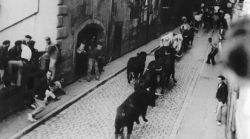
The History of the Running of the Bulls
Most historians place the beginning of the Running of the Bulls in the fourteenth century. Bullfights have been taking place in Pamplona since 1385, and running with the bulls through the city became a tradition, even though the king of Navarra, Charles II the Bad, tried to suppress it.
Three major summer events were combined in 1591 in Pamplona: the bullfighting festival, the livestock fair (held on the historically tax-free St. Peter’s day) and the festival of San Fermin (originally in October). For reasons of convenience and better weather, these three festivals were united and are celebrated every year during the week of July 7th, now known as the "Fiestas de San FermÃn." See "Who was San Fermin?".
(Please Click the Photo for more information)
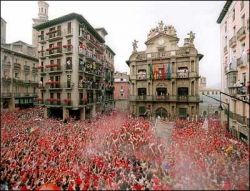
The festival of San FermÃn
e festival of San FermÃn (or Sanfermines, in basque language Sanferminak) in the city of Pamplona (Navarre, Spain), is a deeply rooted celebration held annually from 12:00, 6 July, when the opening of the fiesta is marked by setting off the pyrotechnic chupinazo,[1] to midnight 14 July, with the singing of the Pobre de MÃ. While its most famous event is the encierro, or the running of the bulls, the week-long celebration involves many other traditional and folkloric events. It is known locally as Sanfermines and is held in honor of Saint Fermin, the co-patron of Navarre. Its events were central to the plot of The Sun Also Rises, by Ernest Hemingway, which brought it to the general attention of English-speaking people. It has become probably the most internationally renowned fiesta in Spain. Over 1,000,000 people come to watch this festival.
(Please Click on the Photo for additional information)
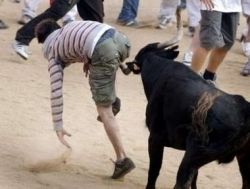
Watch the Running of the Bulls
Ever wanted to view the Running of the bulls from the perspective of the participants? Now you can, this link will give you a live view during the feestival as well as past events.
(Please Click on the Photo to access the Link)
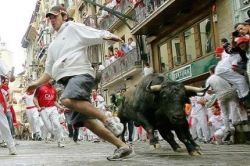
Sanfermin.com
A page dedicated to the festival of San Fermin and the running of the bulls. Click on the photo to access the link.
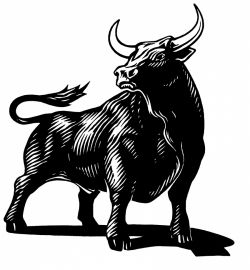
EL TORO NEGRO
EL TORO NEGRO
The New Way to Access Internet Products
Please double click on the photo to enter site:
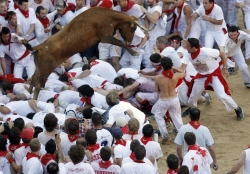
Running with the bulls google news links
Click on the photo to access
The Running of the Bulls
Videos related to the running of the bulls in Pamplona, Spain
